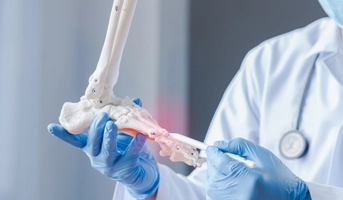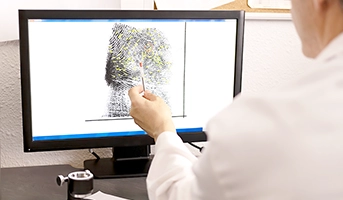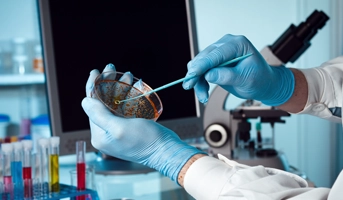High-yielding topics are a key element for an effective preparation strategy to score high in exams. A NEET PG aspirant must plan the preparation wisely focusing on high-yielding topics from every subject, time management, and most of all, health. Community medicine is a branch of medicine concerned with health promotion and disease prevention using professional management skills. A specialist in this field provides a holistic view of health and medical interventions with a primary focus on population health.
MBBS Prof Exam Pattern
According to the new CBME curriculum, the MBBS Prof exam for the Community Medicine subject has two theory papers, each of 100 marks, and the practical examination (Practical/Clinical + Viva) of 100 marks, i.e., a total of 300 marks paper. Questions in the theory examination include different types such as structured essays (long answer questions – LAQ), short answer questions (SAQ), and objective questions (MCQs and IBQs).
Important topics of PSM in MBBS
During MBBS, you should focus on early preparation not only for prof exams but also for competitive exams if you are aiming for postgraduation. Currently, there are two main exams in India, INI-CET and NEET PG/NExT. The weightage of Community Medicine is about 13-16 questions in INI-CET and 20-22 questions in NEET PG 2023.
Here’s a list of Important topics for PSM for NEET-PG, INI-CET, and MBBS Prof exams.
Concept of Health and Disease
- PQLI
- HDI
- Spectrum of Health
- Determinants of Health
- Indicators of Health
- Disability rates
- Healthcare Delivery Indicators
- Levels of Healthcare
- Epidemiological triad- The triangle
- Multifactorial causation
- The web of causation
- Natural History of Disease
- Risk factors
- Iceberg of disease
- Concept of Prevention
- Modes of Intervention
Environmental Health Problems
- Water (Complete)
- Air Pollution
- Disposal of wastes
- Septic tank
- Modern sewage treatment (Complete)
- Principles of arthropod control
- Mosquitoes- Anopheles vs Aedes
- Oxidation pool
- Fly control measures
- Classification of insecticides
- Overcrowding
- Indices of thermal comfort
Communication and health education
- Communication process
- Types and barriers of communication
- Functions of health communication
- Health Education- Define, Aims & Objectives
- Approach to health education
- Education vs Propaganda
- Principles of health education
- Practice of health education (Complete)
Nutrition
- Proteins (Complete)
- Iron (Complete)
- Iodine (Complete)
- Nutritional problems in public health- Undernutrition, Lathyrism
- Assessment of nutritional status
- Milk Hygiene
- Food toxicants
- Food additives
- Food fortification
- Food adulteration
- Community nutrition programmes
Basic statistics and its applications
- Presentation of statistical data (Complete)
- Measures of Central tendency
- Measures of dispersion
- Normal distribution & Curve – standard normal distribution
- Sampling methods
- Null & Alternate hypothesis
- Chi-square test
Epidemiology
- Name of Epidemiologist
- Mortality rates and ratio
- Descriptive Epidemiology (Complete)
- Case-control study (Complete)- Exposure rates, Advantages & Disadvantages, Examples, Matching, Odd’s ratio, Estimation risk
- Cohort Study (Complete)- Method, Relative risk, Attribute risk & Palpation attributable risk, Relative vs attributable risk, Examples
- Cohort vs case-control studies
- RCT- methods, types, Randomisation
- Association & Causation- types
- Dynamics of transmission
- Modes of transmission- Classification
- Incubation period, Generation time, Serial interval, communicable period
- Secondary attack rate
- Herd immunity
- National Immunisation Schedule
- Disinfection
- Investigation of an epidemic
- Screening of Disease-Complete criteria for screening
- Millennium Development Goals- MDG, SDG
Epidemiology of communicable and non-communicable diseases
Communicable diseases:
- Chickenpox
- Tuberculosis (Complete)
- Diphtheria- Immunisation
- Meningococcal meningitis
- Hepatitis B
- Diarrhoea
- Malaria
- Typhoid
- Investigation of food poisoning
- Tetanus- prevention
- Leprosy (Complete)
- AIDS (Complete)
Non-communicable diseases:
- Coronary heart disease and risk factors
- Oral Cancer
- Diabetes Mellitus
- Obesity
- Blindness- causes, and prevention
Demography and vital statistics
- Family Planning
- Contraception- Classification, barrier methods, IUDs, Hormonal pills
- MTP
- Post- contraception methods
- Pearl Index
- Health Delivery System
- Community- Assessment approach
Occupational Health
- Occupational Hazards
- Occupational diseases
- Lead poisoning
- Pneumoconiosis
- Silicosis
- Anthracosis
- Sickness absenteeism
- Health problems due to industrialization
- Measures for health protection of workers- Medical measures, Engineering measures, Legislation, ESIS, Factories Act
- Ergonomics
Genetics and Health
- Genotype, Phenotype
- Sickle cell anemia
- Advances in human genetics
- Health promotional measures
- Genetic Counselling
- Early diagnosis and treatment- Amniocentesis
Pediatrics, OBGYN, Geriatrics
- MCH problems
- Antenatal care (Complete)
- Child health problems
- Indicators of MCH
- Post-natal care
- Preterm babies and causes
- Kangaroo mother care
- Growth chart & uses
- Health problems of aged
Disaster Management
- Define- Disaster, Hazard
- Disaster Cycle
- Triage
- Floods
- Earthquakes
- Man-made disaster
Hospital waste management
- Define- Biomedical waste
- Healthcare waste generation
- Health hazards of healthcare waste
- Collection, treatment, processing, and disposal of BMW
Mental Health
- Characteristics of a mentally healthy person
- Warning signals of poor mental health
- Types and causes of mental health illness
- Alcoholism
- Drug Addict and dependence
- Drug Addiction-Preventive measures
Health planning and management
- Planning- Define, Objective, Goal, Target
- Management- Define, Techniques, Network analysis, PPBS
- National Health Policy 2015
- Health committee- Bhore (1946), Mudaliar (1962)
- Panchayat Raj
- Evaluation of Health Services
Health Programmes in India
- National vector-borne disease control programme: Malaria, Kala-azar, Dengue
- NLEP (Complete)
- RNTCP
- NACP
- National Programme for control of blindness
- RMNCH+ A
Health care of the community
- Health problems
- Healthcare systems
- Subcentres Type A vs Type B
- PHC – functions
- CHC
- Health for all
- Duties of Medical officer
- Anganwadi worker
- ASHA foundation
- ANM – functions
- HWM – functions
- Voluntary Health Agencies – functions
Medicine and Social Sciences
- Role of emotions in health & medicine
- Defense mechanism
- Types of Family
- Functions of Family
- Family in health and disease
- Cultural factors in health and disease
- Consumer Protection Act
International Health
- World Health Organization
- UNICEF
- Rockefeller foundation
- Ford Foundation
- World Health Day
Must know topics for Community Medicine practical examination
- Health-WHO and Operational Definition
- Definition -Primary Healthcare, disease, Illness, Sickness,
- Elimination & Eradication
- Epidemiology- Infectious diseases
- HTN (Complete)- rules, risk factors, tracking, prevention
- Diabetes Mellitus
- Obesity
- HIV
- Contraception
- Nutrition-Milk & Egg
- Arthropods of medical importance
- Arthropod-borne diseases
- Overcrowding
All above mentioned are high-yielding topics for NEET PG 2023 and frequently asked topics in the MBBS prof exams. Do not skip these important topics to score high in your exams.
To supplement your studies and NEET PG 2023 preparation, Community Medicine for UnderGrads is one of the best online PSM courses by renowned faculty, Dr. Bratati Banerjee. This online course includes illustrated video lectures, notes, 2000+ self-assessment questions, and case studies. The lectures follow the new CBME approach, which ensures conceptual clarity and high scores in prof and entrance exams.
To get conceptual clarity with the help of MBBS Courses Online, Click Here.
Click here to know the important topics of Pharmacology for NEET-PG.
Click here to know the important topics of Microbiology for NEET-PG.
Frequently Asked Questions (FAQs):
Q 1. Is PSM important for NEET PG?
Ans: Yes, PSM is an important subject for the NEET exam. The weightage of Community Medicine in NEET PG is almost 20-22 questions per year.
Q 2. What is the scope of community medicine?
Ans: The scope of community medicine is not only limited to the job profiles of a doctor in state or private hospitals, but one can also get employment opportunities in NGOs, health authorities, national health authorities, vaccination clinics, state, central health services, and international organizations such as WHO, UNICEF.
Q 3. How to learn Community Medicine for MBBS online?
Ans: A medico can subscribe to the online PSM course or access online video lectures on youtube. Community Medicine for UnderGrads is one of the best online Community Medicine courses designed by renowned faculty, Dr. Bratati Banerjee. This online MBBS course comprises highly illustrative video lectures, notes, self-assessment questions, and case studies along with recent developments in this field. The lectures follow the new CBME approach to provide conceptual clarity and score high in the prof as well as entrance examination.
Q 4. Which is the best book for Community Medicine for MBBS students?
Ans: ‘DK Taneja’s Health Policies & Programmes in India’ and ‘Mahajan’s Methods in Biostatistics for Medical Students & Research Workers’ by Dr. Bratati Banerjee are among the best books for PSM for MBBS students.
Science is constantly evolving, and we are getting to witness a shift in global health and the environment. With the constant evolution of health needs and practices, our country, India needs to own a more relevant medical stand for the same. This can be done by focusing on Community Medicine, which aims to protect and promote the health and well-being of communities and populations through Primary Health Care approach.
What is Community Medicine?
Community Medicine, also known as Preventive and Social Medicine (PSM) is a vast discipline. The vision of this discipline is promoting health, preventing diseases, and prolonging life. Community Medicine is an amalgamation of public health practice and primary level care of clinical medicine. This branch of medicine focuses on determinants of local health issues, community health, and community-oriented health care and providing optimal healthcare solutions to at-risk communities for achieving an improved quality of health and life.
Community Medicine/PSM covers public health nutrition, and health-care delivery systems including primary health care, along with epidemiology, social science, behavioral science, environmental science, biostatistics and management sciences as other critical allied sciences. The knowledge of this branch of medicine can be enhanced with other available resources such as government publications and recently updated guidelines.
Community Medicine Syllabus as per CBME Curriculum
• Concept of Health and Disease
• Relationship of social and behavioural to health and disease
• Environmental Health Problems
• Principles of health promotion and education
• Nutrition
• Basic statistics and its applications
• Epidemiology
• Epidemiology of communicable and non-communicable diseases
• Demography and vital statistics
• Reproductive maternal and child health
• Occupational Health
• Geriatric services
• Disaster Management
• Hospital waste management
• Mental Health
• Health planning and management
• Health care of the community
• International Health
• Essential Medicine
• Recent advances in Community Medicine
The former medical education system was built on a subject-centric and time-based curriculum. The majority of evaluations were summative, with minimal room for input. The evaluation techniques placed a greater emphasis on knowledge than on aptitude and skills. There was no emphasis on patient communication, doctor-patient relationships, ethics, and professionalism. This is where the new CBME Curriculum steps in to fill the void. It’s a strategy for ensuring that graduates gain the skills they’ll need to meet the patients’ needs in a wholistic manner. It promotes accountability, flexibility, and learner-centeredness rather than time-based training.
How to Study Community Medicine online during MBBS?
Studying Community Medicine requires patience and dedication. It is critical for all medical students to understand the subject inside out. So, first and foremost, the most important aspect of studying the subject is to try to connect all the ideas and concepts to real-world applications. As the subject is broad, you’ll need to resort to resources that provide you the right guidance with trusted course content. Try to cover each topic in detail so that you can visualise and recall all the elements of PSM during last-minute exam revision.
If you are planning to study Community Medicine (PSM) online, you can subscribe to DigiNerve’s Community Medicine for UnderGrads Course.
DigiNerve is a platform that is well-developed to equip medicos with the apt knowledge of all the disciplines. The Community Medicine course has been recently added to its list of excellent UnderGrad Courses. This course is a unique product that not only builds the basics but also keeps students updated about the recent developments in the field of community medicine. We are excited to announce that the students will be guided by one of India’s top faculty – Dr. Bratati Banerjee. She is not only one stellar author of many well-known books like “DK Taneja’s Health Policies & Programmes in India” and “Mahajan’s Methods in Biostatistics for Medical Students & Research Workers”, but also a highly qualified academician in the discipline of Community Medicine/PSM. All the content that is present in her video lectures has been professionally researched and updated, which is a bonus on top of your regular classes.
Community Medicine for UnderGrads has been developed as per the CBME (Competency-Based Medical Education) curriculum and designed with a coherent approach to solidify the concepts about Community Medicine. The course content has been kept as rich and instructive as possible with 100 lecture notes, 2000+ MCQs, relevant images, flowcharts, tables, and much more for conceptual clarity and proper revision.
Community Medicine for UnderGrads course is bifurcated into the following 5 sections:
1) Health and its determinants
2) Epidemiology
3) Care of vulnerable population
4) Management in health
5) Practicals
For the comfort of the students, these sections are further subdivided and spread over 40 different topics, which are followed by 105 sub-topics, so that the students can easily understand and learn all the basics of Community Medicine/PSM. Moreover, the practical section covers:
• Family health that includes how to study a family and the index case of the family.
• Spots and Exercises that include spotters from MCH, Nutrition, and Equipment, and exercises on epidemiology and statistics. Primarily, the faculty has discussed the formulae in the exercises section along with the calculation, and relevant topics with numerous examples.
At the end of each session, questions with answer keys are provided for self-assessment. The animations in the videos will acquaint the students with commonly asked questions in viva voce and university examinations regarding social medicine and community health; thus, enabling them in studying and preparing the subject simultaneously. Not only university exams, but the course also helps students to Prepare for NEET PG Exam.
Teaching community medicine to undergraduate students has become an important part of the medical curriculum to ensure that trained individuals maintain and improve the high standards of health in a developing nation like India in general.
Other FAQs Related to Community Medicine Subject
1. What are the important topics in Community Medicine? (Cover Secondary Keywords)
Community Medicine covers Social Medicine and Community Health, Community Family Medicine, and Preventive and Social Medicine (PSM). Some of the most important topics are Nutrition, Epidemiology, Safe Water, Biomedical Waste Management, Tuberculosis, RMNCH+A Programme, Public Health Emergency, Family Health Care, Nutrition & Nutritional Disorders, and recent topics like COVID-19.
2. Is it necessary to prepare Community Medicine from 2nd Year?
Yes, it is important to study PSM or Community Medicine from 2nd year. One can start with infectious diseases and combine the knowledge with microbiology. It is better to start studying as early as possible because PSM has a lot of weightage in the PG Exam and can also help in supplementing the understanding of various concepts for clinical subjects like medicine, obstetrics and gynecology and pediatrics.
3. How should a 3rd Year student approach PSM or Community Medicine?
You can start studying from “Communicable and Non-communicable disease” which are easy to understand. Then, take up biostatistics, screening and epidemiology, giving special attention to Health Programmes and Polices. Referring to previous year question papers will also help a lot.
4. Which books can one refer to study Community Medicine?
Park’s Textbook of Preventive & Social Medicine is quite popular for Community Medicine, however, students also refer to books such as Suryakantha’s “Community Medicine with Recent Advances” and Dr. Bratati Banerjee’s “DK Taneja’s Health Policies & Programmes in India”.






























